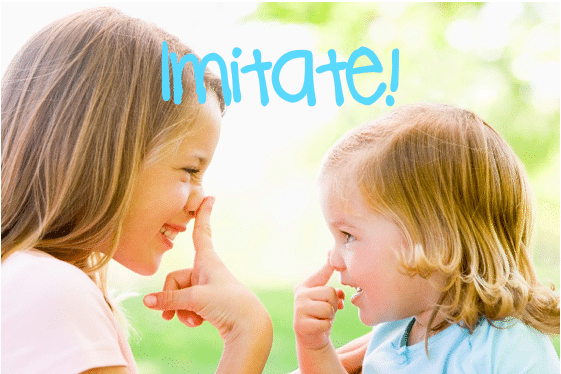This Scribble was Scribbled by Trisha Pranjivan (Speech and Language Therapist at TCP)
A couple of months ago we posted a Scribble about the Hanen More Than Words program. It’s an evidence-based programme developed by expert speech and language therapists for parents of children with Autism Spectrum Disorders (ASD) and social communication difficulties. If you missed the Scribble, click here!
I was lucky enough to attend a More Than Words workshop last month and I left feeling really excited about sharing tips and strategies with parents and supporting parents to help their children reach their full communication potential.
Although the strategies that we talked about during the three-day workshop were concepts that I was already familiar with, it was great to refresh my knowledge on the subject matter and also learn more about the reasoning and research behind why we do certain things.
One strategy that stood out to me has to do with ‘imitation.’ Children with ASD or social communication difficulties often have difficulties with imitation. You may find it hard to get their attention during play and they may not notice what you are doing. If they aren’t looking at what you are doing, they won’t be able to imitate what you are doing.
Research shows that imitation abilities of a children with ASD can have an effect on other areas of development including language outcomes, play skills, peer play and joint attention (the ability to share a focus with another person on an object).
Knowing how important imitation is as a foundation skill for other areas of communication, it’s important to know how best to facilitate imitation in children who find this skill difficult!
Imitate!
More Than Words teaches parents to use 4 I’s when interacting with their children: Include, Imitate, Intrude, and Interpret. Imitate is the strategy that I want to scribble about today.
It’s really simple! Watch what your child is doing, and imitate them. Copy their actions, their sounds, and their movements. If your child is lining up their cars on the table, get your own set of cars and begin lining yours up on the table. If your child is banging on a drum, grab yourself another drum and bang on yours.
When you imitate your child, you may notice that he starts to take notice. He may move closer to you, look at you, vocalise, or smile. Your child will realise that he suddenly has the power to control your actions! Some children will find this very motivating. You may observe them perform an action and then look at you to watch you perform the same action. This can lead into a fun back and forth interaction! Eventually, you can add on actions to your imitated actions and you may see your child imitate what you are doing too! This is a great way to encourage your child to imitate your actions, sounds, and facial expressions.
Some Tips!
- Have doubles of toys so that you can avoid making your child upset by taking away their toy to imitate them
- Be persistent! You may not see results the first time you imitate your child. Keep going! Use this strategy in a variety of different activities; you may observe results in one activity but not another.
- Copy everything! This includes their movements, sounds, facial expressions and actions.
Have fun imitating! If you are interested in learning more about the More Than Words program, speak to your Speech and Language Therapist. The Children’s Place has trained therapists who can deliver the training to parents so let us know if you are interested!





Leave A Comment